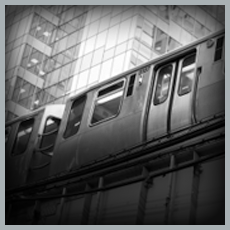OVERVIEW
Roughly 80% of Americans live in cities or nearby suburban neighborhoods. Even the traditionally rural Midwest and South are catching up, with 76% of their respective populations now living in urban areas.1 These communities face higher traffic congestion, which results in longer commutes, lost economic opportunities, more pollution, and heightened public health problems. Increasing public transit could help reduce traffic in many of these areas, but federal transportation policy currently focuses overwhelmingly on highway development, often at the expense of other programs.2 As a result, almost half of Americans lack access to public transit.3 The federal government should rethink how public transit is financed, and adjust the policies that currently favor more roads over all other options.
ANALYSIS
Spanning 47,000 miles of roadway, the interstate highway system is one of the Nation’s great post-war accomplishments.4 But rapid increases in the number of miles driven each year have led to highway congestion and required transportation planners to regularly choose between expanding capacity and properly maintaining existing roads.5 Americans now waste 5.5 billion hours, 2.9 billion gallons of gasoline, and $121 billion while stuck in traffic each year.7 Despite efficiency improvements, passenger vehicles remain a major source of pollution, emitting 31,000 tons of SO2, 3.5 million tons of NOx,8 and over a gigaton of CO2 equivalent9 —a full 15% of total U.S. greenhouse gas emissions.10
As more Americans move to cities and inner suburbs, expanding public transit options would reduce congestion, save commuters money, and help the U.S. become more energy independent.11 Expansion of transit systems12 already has helped open new communities to business opportunities, boosted property values,13 and added over $300 billion to GDP in the last decade.14 Today’s public transportation systems reduce CO2 by 37 megatons and avoid 4.2 billion gallons of gasoline use each year,15 which would otherwise cost travelers nearly $15 billion.16
IMPLEMENTATION
To expand transit in the U.S., the federal government should help local governments access private funding sources and use data-driven methods to prioritize limited budgets.






